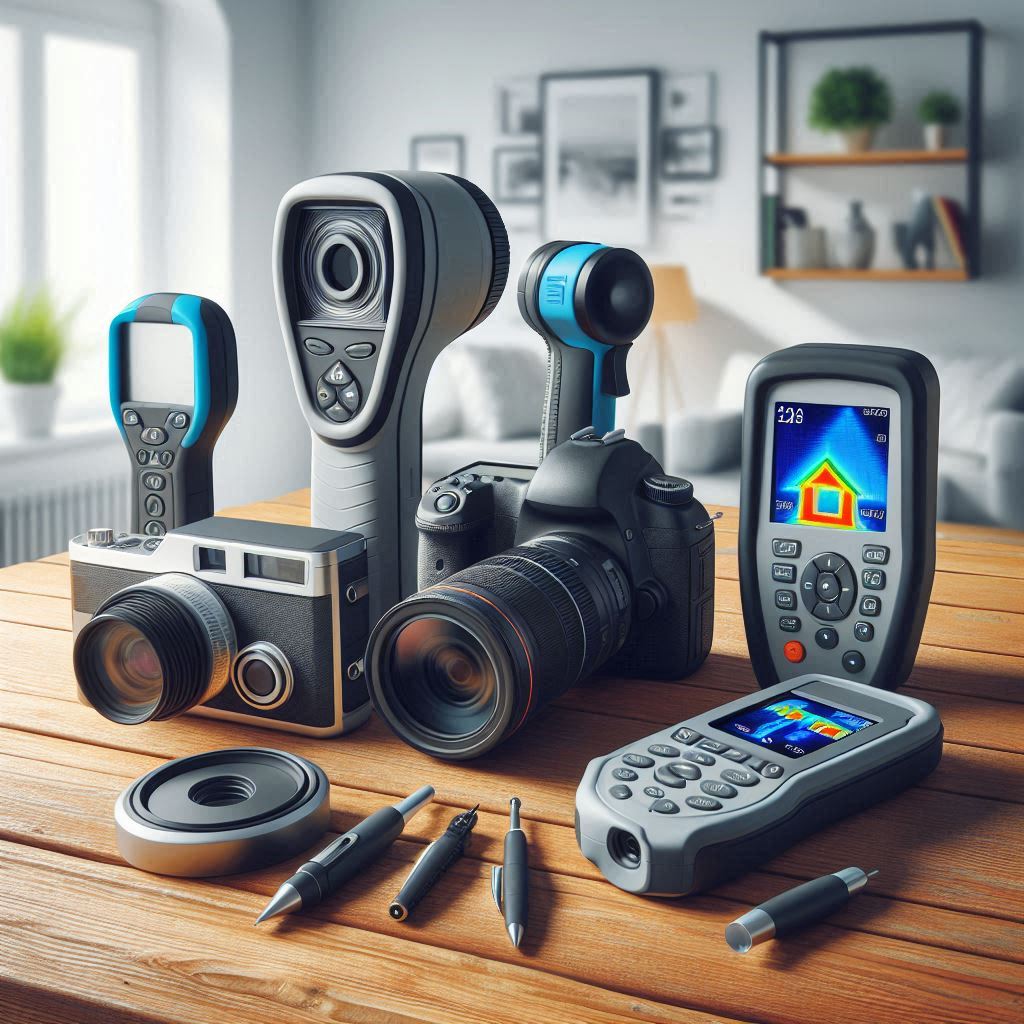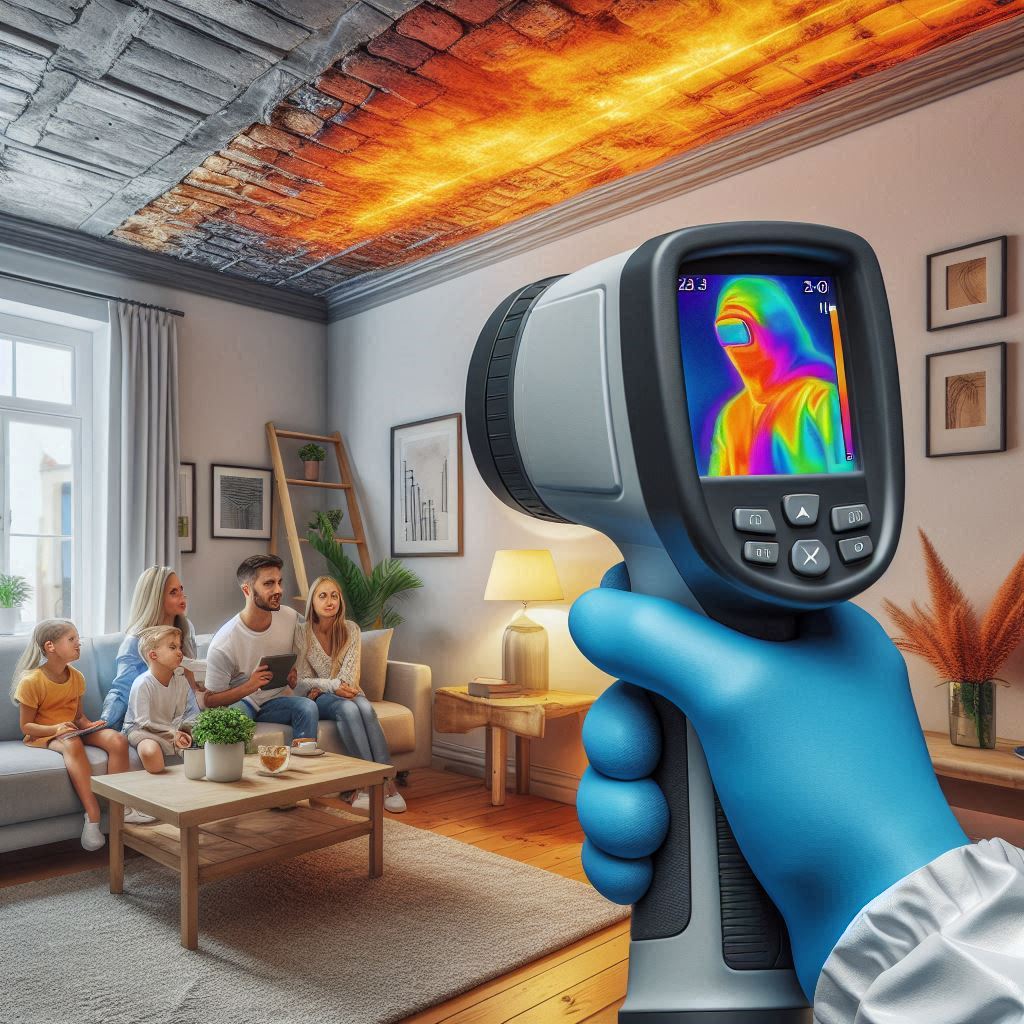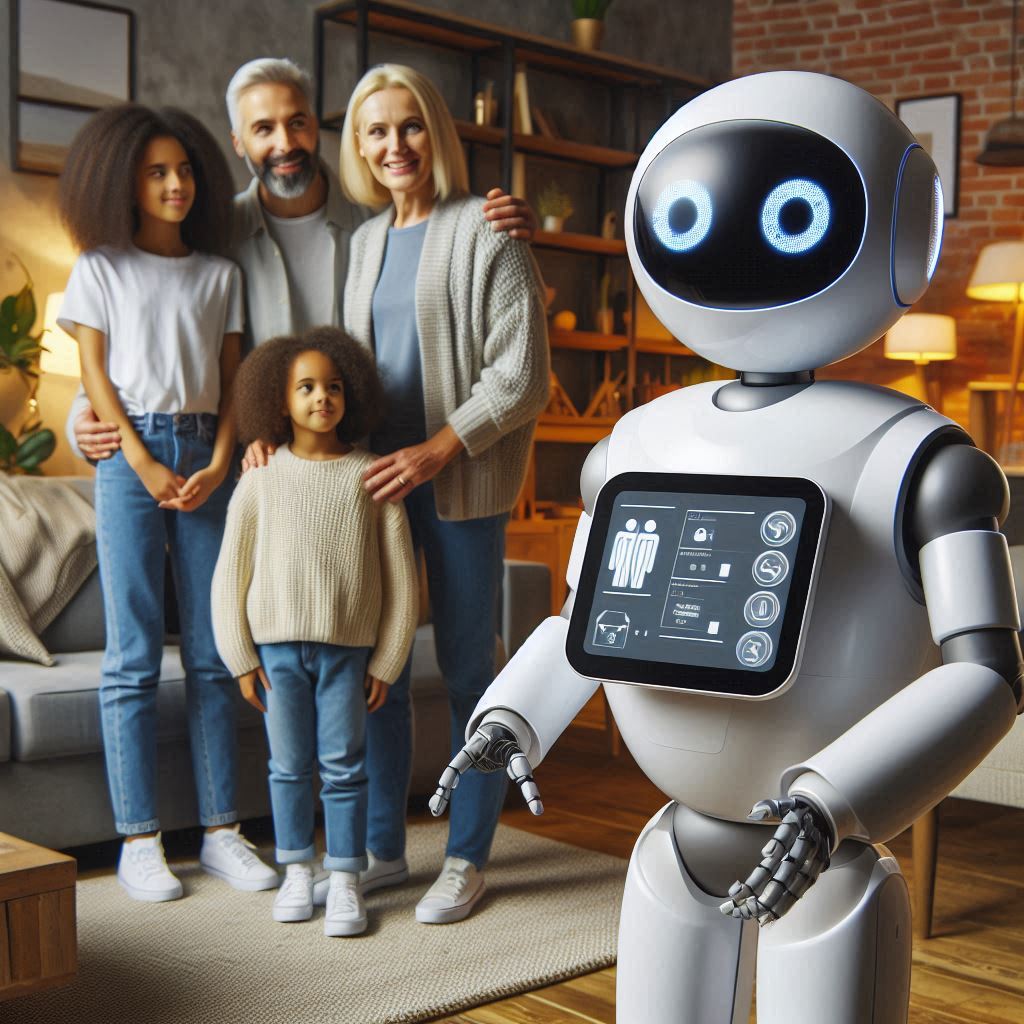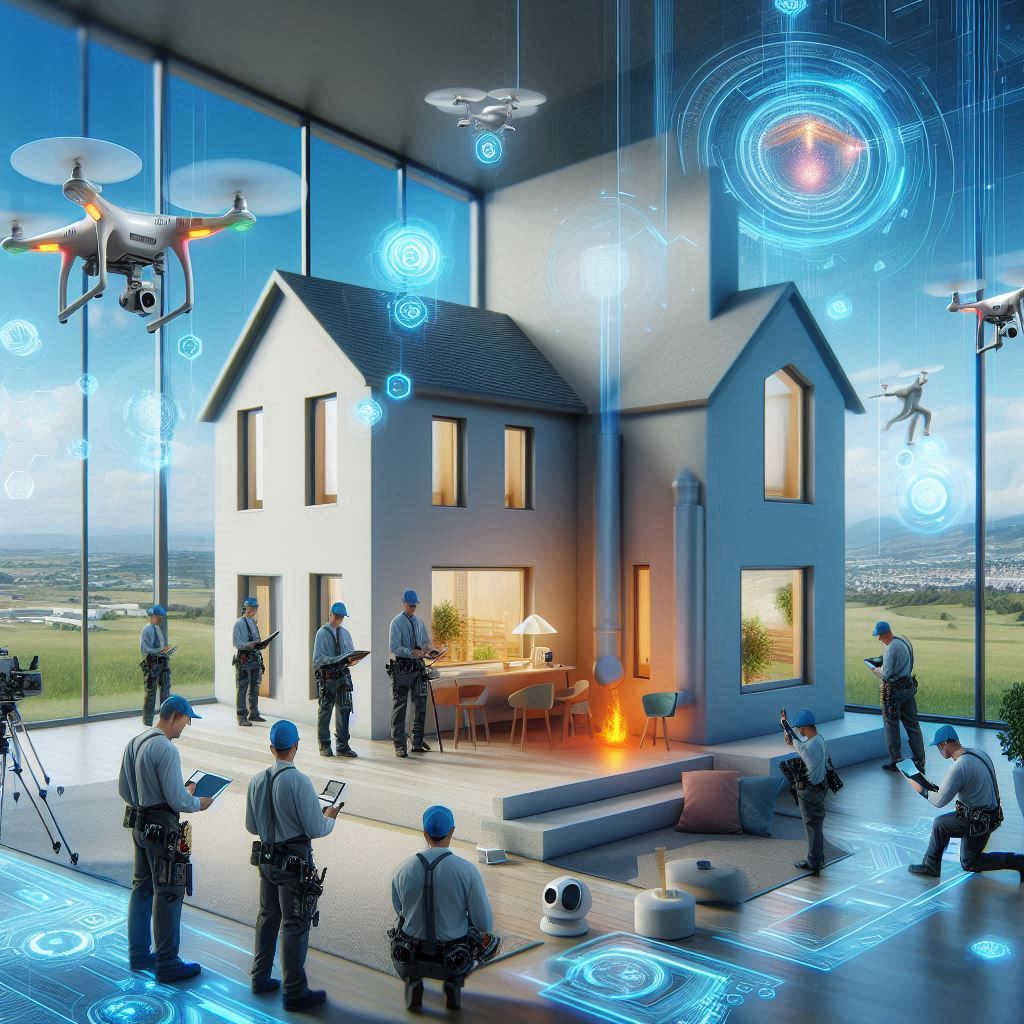Introduction
Home inspections play a crucial role in evaluating the condition of residential properties. Traditionally, inspectors relied on manual methods to assess homes, which could be time-consuming and limited in accuracy. However, advancements in technology have revolutionized the home inspection process by introducing high-tech tools that enhance efficiency, precision, and data collection capabilities.

In this comprehensive guide, we will explore various high-tech tools used by home inspectors today. We will delve into their functionalities, benefits, and how they streamline the inspection procedure. From thermal imaging cameras and moisture meters to drones and 3D modeling software – we will cover an array of cutting-edge technologies that are transforming the field of home inspections.
Whether you are a homeowner looking to ensure your property’s integrity or a professional inspector seeking to upgrade your toolkit, this guide aims to provide valuable insights into the world of high-tech tools for home inspections. Join us as we explore these innovative devices that are redefining how properties are evaluated and paving the way for more accurate assessments in the future.
The Benefits of Using High-Tech Tools in Home Inspections
Home inspections play a crucial role in the real estate industry, providing potential home buyers with valuable insights into the condition of a property before making one of life’s most significant investments. Traditionally, home inspections were conducted using basic tools such as flashlights, ladders, and tape measures. However, with advancements in technology, high-tech tools have emerged that are revolutionizing the field of home inspections.

Thermal Imaging Cameras
One of the primary benefits of utilizing high-tech tools is enhanced accuracy and efficiency during home inspections. These cutting-edge devices can accurately measure dimensions, detect structural issues, and identify potential problems that may be invisible to the naked eye. For instance, thermal imaging cameras can capture heat signatures and reveal hidden moisture or insulation issues within walls or ceilings. This advanced level of precision ensures that no critical defects go unnoticed.
Inspection software applications
Furthermore, high-tech tools provide inspectors with detailed data analysis capabilities that enable them to generate comprehensive reports quickly. With digital devices like tablets or smartphones equipped with specialized inspection software applications, inspectors can seamlessly record their findings while simultaneously capturing images or videos to support their assessments.
The utilization of cloud-based storage solutions allows for immediate access to this information by both inspectors and clients alike. Consequently, this expedites the overall inspection process from start to finish.
Drones for property inspection
In addition to improving accuracy and efficiency levels during inspections, these technological advancements also enhance safety conditions for both inspectors and homeowners alike. Take drones as an example;
they offer aerial views of properties without endangering human lives by climbing onto rooftops or accessing hazardous areas manually. Additionally useful for inspecting tall structures such as chimneys or roofs are telescopic cameras which allow easy exploration without having an inspector risk their physical well-being.
Moreover , another advantage brought about by employing high-tech instruments is improved communication between all parties involved in a real estate transaction . For instance , live-streaming video platforms facilitate virtual walkthroughs where remote buyers can participate actively . This enhances transparency by allowing buyers to ask questions regarding specific areas of concern in real-time . It also eliminates the need for repeated site visits and fosters trust by enabling all parties to be on the same page throughout the inspection process .
Despite these numerous benefits , it is essential to note that high-tech tools do not replace human expertise but rather complement it . Skilled inspectors are still required to analyze data collected by these advanced devices and provide expert opinions based on their experience and knowledge. High-tech tools serve as valuable aids that help inspectors focus their attention on areas where issues may arise, ultimately delivering a more accurate assessment.
Conclusion
utilizing high-tech tools in home inspections offers several advantages over traditional methods. They enhance accuracy, efficiency, safety, and communication within the inspection process. These innovative devices enable inspectors to conduct thorough examinations while reducing time spent generating reports.
Furthermore, they empower potential home buyers with valuable insights into a property’s condition before making an informed purchasing decision. As technology continues to evolve , one can only expect further advancements in high-tech instruments used in home inspections , leading to even greater precision and effectiveness in this crucial field of real estate evaluation .
How Drones are Revolutionizing the Home Inspection Industry

Drones have become increasingly popular in various industries, and the home inspection industry is no exception. With their ability to capture high-resolution images and videos from unique angles, drones are revolutionizing the way home inspections are conducted. This comprehensive guide will explore the benefits of using drones for home inspections, the different types of drones available, and how they are being integrated into the inspection process.
One of the key advantages of using drones for home inspections is their ability to access hard-to-reach areas. Traditional methods often require inspectors to climb ladders or navigate through tight spaces, posing safety risks and limitations. Drones equipped with cameras can easily fly over rooftops, reach elevated areas such as chimneys or gutters, and inspect hard-to-access places like crawlspaces or attics. By providing a bird’s-eye view without compromising safety or causing damage to property, drones offer a more efficient and thorough inspection process.
When it comes to choosing a drone for home inspections, there are several options available on the market today. The most common type used in this industry is multirotor drones due to their stability and maneuverability capabilities. These drones typically have multiple propellers that enable them to hover in place while capturing detailed images or recording videos. Another option is fixed-wing drones which resemble miniature airplanes. They can cover larger areas more quickly but may not be as precise in navigating confined spaces compared to multirotor ones.
To ensure accurate data collection during a drone-assisted inspection, it is crucial for inspectors to utilize high-quality cameras capable of capturing clear visuals from varying distances. High-resolution cameras mounted on professional-grade drones allow inspectors to zoom in on specific details such as cracks in walls or roofing issues that may not be visible with the naked eye alone. Additionally, thermal imaging cameras can be attached to certain models of drones which provide valuable insights into potential insulation problems or heat leaks within buildings.
Integrating drone technology into existing inspection processes requires training and expertise. Inspectors need to familiarize themselves with drone operation, flight regulations, and safety protocols. Obtaining a Remote Pilot Certificate from the Federal Aviation Administration (FAA) is often mandatory for commercial drone operations in the United States.
This certification ensures that inspectors understand airspace regulations, weather conditions, emergency procedures, and other critical aspects of operating drones safely.
The use of drones in home inspections not only enhances the efficiency of data collection but also improves documentation and reporting capabilities. By capturing high-quality images or videos, inspectors can provide clients with visual evidence of any issues discovered during an inspection.
These visuals can be included in detailed reports to better communicate findings to homeowners or potential buyers. Moreover, by utilizing specialized software and tools designed for analyzing drone-captured data, inspectors can generate accurate measurements or create 3D models for further analysis or future reference.
conclusion
drones are revolutionizing the home inspection industry by providing efficient access to hard-to-reach areas while ensuring inspector safety and accuracy in data collection. With various types of drones available on the market equipped with advanced cameras and thermal imaging capabilities, inspectors have a range of options to choose from based on their specific needs.
However, proper training and certification are essential to operate drones legally and safely within regulatory frameworks established by aviation authorities like the FAA. As technology continues to evolve rapidly, integrating high-tech tools such as drones into home inspections will undoubtedly become more prevalent in ensuring thorough assessments of properties for both homeowners’ peace of mind and real estate transactions alike.
Top High-Tech Tools Every Home Inspector Should Have
Home inspections are an essential part of the home buying and selling process. A thorough inspection can help identify any existing or potential issues with a property, giving both buyers and sellers valuable information to make informed decisions. With advancements in technology, home inspectors now have access to high-tech tools that can greatly enhance their ability to detect problems and provide more accurate assessments.
thermal imaging camera
One of the top high-tech tools every home inspector should have is a thermal imaging camera. This device uses infrared technology to detect variations in temperature, which can indicate hidden issues such as water leaks, insulation problems, or electrical faults. By capturing images that display heat patterns, inspectors can easily identify areas of concern that may not be visible to the naked eye. This tool provides valuable insight into potential energy efficiency problems and helps ensure homes meet current safety standards.
moisture meter
Another must-have tool for home inspectors is a moisture meter. Moisture meters allow inspectors to measure the moisture content within building materials such as wood or drywall. Excessive moisture levels could lead to mold growth or structural damage over time. By pinpointing areas with abnormal moisture levels, inspectors can recommend necessary repairs or further investigation by specialized professionals.
Drones
In recent years, drones have become increasingly popular among home inspectors due to their ability to access hard-to-reach areas quickly and safely. Equipped with cameras capable of capturing high-resolution images and videos from various angles, drones provide a bird’s-eye view of roofs, chimneys, gutters, and other parts of the property that might be difficult or dangerous for an inspector to inspect manually. Additionally, they enable inspectors to survey large properties more efficiently by covering extensive ground in less time.
air quality monitoring
To assess indoor air quality accurately during a home inspection, it is crucial for inspectors to use air quality monitors/analyzers—a powerful high-tech tool designed explicitly for this purpose—particularly when considering allergens like dust mites or volatile organic compounds (VOCs).
These devices measure particulate matter, humidity, temperature, and potentially harmful gases in the air. By analyzing these factors, inspectors can provide homeowners with detailed reports on their indoor air quality and recommend necessary improvements to ensure a healthier living environment.
Infrared cameras
Infrared cameras are also invaluable tools for detecting electrical issues during home inspections. These cameras help identify overheating components in electrical panels or wiring systems that could potentially lead to fires or other hazards. By using an infrared camera alongside traditional inspection methods, inspectors can thoroughly evaluate the safety of a property’s electrical system and advise any necessary repairs or upgrades.
moisture sensors
Finally, moisture sensors are excellent devices for identifying leaks behind walls or beneath floors without causing significant damage to the property. These handheld tools use radio frequency technology to detect hidden moisture within building materials without requiring physical contact with the surface. Moisture sensors give inspectors accurate readings that can help pinpoint areas where water damage may be occurring so appropriate actions can be taken promptly.
conclusion
high-tech tools have revolutionized the field of home inspections by providing more precise measurements and expanding access to hard-to-reach areas. From thermal imaging cameras to drones and from air quality monitors/analyzers to infrared cameras and moisture sensors—these tools enhance an inspector’s ability to identify potential issues accurately.
Incorporating these advanced technologies into home inspections not only improves efficiency but also allows for more informed decision-making regarding property transactions—an essential aspect of protecting both buyers’ investments and sellers’ reputations.
Integrating Thermal Imaging Technology for Effective Home Inspections
Home inspections play a vital role in the real estate industry as they provide potential buyers with a comprehensive assessment of the condition of a property. Over the years, advancements in technology have revolutionized this process by introducing high-tech tools that aid inspectors in their work. One such tool is thermal imaging technology, which has proven to be highly effective in detecting issues not visible to the naked eye.
thermograms
Thermal imaging cameras are equipped with sensors that capture and interpret temperature differences within an object or surface. By producing detailed images called thermograms, these cameras enable home inspectors to identify anomalies such as water leaks, insulation gaps, electrical faults, and even pest infestations.

One of the main advantages of integrating thermal imaging into home inspections is its ability to reveal hidden moisture problems. Moisture intrusion can lead to structural damage and mold growth if left undetected.
Traditional inspection methods may only detect obvious signs of water damage such as stains or peeling paint on walls and ceilings. However, thermal imaging allows inspectors to pinpoint areas where there might be excessive moisture buildup behind surfaces or within materials like drywall or flooring.
insulation levels
Another significant benefit of using thermal imaging for home inspections is its capability to identify insufficient insulation levels. Inadequate insulation can result in energy inefficiency and increased utility costs for homeowners. With a thermal camera, inspectors can easily locate areas where heat loss occurs due to poorly insulated walls, windows, doors, or roofs. These findings help homeowners make informed decisions about improving their property’s energy efficiency.
Electrical problems
Electrical problems pose significant safety risks within homes; therefore it is crucial for them to be identified during inspections accurately. Thermal imaging provides an efficient way to spot potential electrical faults by visualizing abnormal heat patterns caused by overloaded circuits, loose connections, or faulty wiring concealed behind walls or other structures. Early detection of these issues enables homeowners to take necessary precautions before they escalate into hazardous situations like fires.
Furthermore,t hermal imaging technology also aids in detecting pest infestations that may not be visible during a standard visual inspection. Termites, rodents, and other pests often leave behind heat signatures that can be picked up by thermal cameras. This allows inspectors to identify potential areas of concern and recommend appropriate treatments or preventive measures.
While thermal imaging technology offers numerous advantages for home inspections, it is important to note its limitations as well. For instance, this tool cannot diagnose the exact cause of an issue; rather, it helps pinpoint anomalies that require further investigation. Additionally, certain environmental conditions such as extreme temperatures or reflective surfaces may affect the accuracy of thermal imaging readings.
conclusion
integrating thermal imaging technology into home inspections has proven to be highly effective in identifying hidden issues within properties. From detecting moisture problems and insulation deficiencies to electrical faults and pest infestations, this high-tech tool enhances the efficiency and accuracy of inspections significantly.
However, it is crucial for inspectors to understand its limitations and use the findings as a starting point for further investigation. With advancements in technology continuously evolving the field of home inspections, homeowners can rest assured knowing their investment will undergo thorough scrutiny using state-of-the-art tools like thermal imaging cameras.
Harnessing the Power of Artificial Intelligence in Home Inspections
The field of home inspections has undergone significant changes over the years. With advancements in technology, home inspectors now have access to high-tech tools that aid in their assessments. One such tool is artificial intelligence (AI), which has emerged as a game-changer for the industry. AI-powered systems are capable of processing vast amounts of data quickly and accurately, making them invaluable assets for home inspectors.

One area where AI excels is in identifying potential structural issues. Traditional methods of inspection relied heavily on human judgement and visual assessment. While these approaches were effective to some extent, they often required a great deal of time and expertise to detect subtle signs of damage or deterioration. AI algorithms, on the other hand, can analyze digital images or video feeds from drones or robots to identify any anomalies with remarkable precision.
For example, an AI system can detect cracks in walls or foundations by comparing current images with previous ones taken during earlier inspections. By analyzing patterns and changes over time, it can alert inspectors to potential areas requiring further investigation. This not only saves time but also ensures that no critical issues go unnoticed.
Another benefit of using AI in home inspections is its ability to process large datasets rapidly. In traditional inspections, inspectors would manually document their findings using pen and paper or spreadsheets—a time-consuming process prone to errors due to human oversight or fatigue. With AI-powered software, however, all information gathered during an inspection can be immediately captured digitally.
Inspectors can use handheld devices equipped with specialized apps designed specifically for capturing data points relevant to a property’s condition—such as electrical outlets’ voltage readings or moisture levels within walls—and feeding this data directly into an AI system for analysis later on. This streamlines the entire inspection process while minimizing chances of error caused by manual transcription.
Moreover, machine learning algorithms used by many AI systems become more accurate over time as they are exposed to more data. This means that the longer an AI system is used, the better it becomes at identifying potential issues or predicting maintenance requirements. By leveraging this continuous improvement aspect of AI, home inspectors can provide clients with more precise assessments and actionable recommendations.
In addition to analyzing visual data, AI-powered systems can also process other types of information such as historical weather patterns or regional geotechnical data to assess a property’s vulnerability to natural disasters like floods or earthquakes. By incorporating these additional insights into their inspections, inspectors can offer homeowners a comprehensive understanding of their property’s risks and potential preventive measures.
Despite its numerous advantages, it is worth noting that AI should not replace human inspectors entirely. While machines excel at processing large amounts of data quickly, they lack the nuanced judgment and contextual awareness that humans possess. Therefore, combining AI tools with human expertise allows for a more well-rounded inspection experience—one where technology complements rather than replaces traditional methods.
conclusion
artificial intelligence has revolutionized the field of home inspections by harnessing its power in various ways. From detecting structural anomalies to streamlining data collection processes and providing valuable insights about a property’s vulnerabilities, AI offers immense benefits to both inspectors and homeowners alike. By embracing these high-tech tools responsibly and integrating them into established inspection practices, professionals in the industry can deliver even higher quality services while improving overall efficiency.
The Future of High-Tech Tools for Home Inspections
The future of high-tech tools for home inspections holds great promise, as advancements in technology continue to revolutionize the way we assess and evaluate properties. From drones equipped with thermal cameras to virtual reality walkthroughs, these cutting-edge tools are enhancing efficiency, accuracy, and safety in the field of home inspection.

One such innovation that is gaining traction is the use of drones in home inspections. These unmanned aerial vehicles (UAVs) provide inspectors with a bird’s-eye view of a property, allowing them to identify potential issues that may not be immediately visible from ground level.
Equipped with thermal imaging cameras, drones can detect heat signatures that may indicate faulty electrical systems or insulation problems. This not only saves time but also reduces the risk associated with physically inspecting roofs and other hard-to-reach areas.
Another exciting development is the integration of virtual reality (VR) technology into the inspection process. With VR goggles and a 360-degree camera system, inspectors can conduct virtual walkthroughs of properties without ever setting foot inside them.
This eliminates the need for multiple site visits and allows inspectors to review detailed images and measurements at their own convenience. Additionally, VR technology can simulate different lighting conditions or even showcase how renovations would look before they are implemented – all from the comfort of an office or home.
In recent years, there has also been significant progress in the field of smart home automation – technology that allows homeowners to control various aspects of their homes remotely through smartphone apps or voice commands.
Home inspectors have started using these smart devices during inspections to evaluate their functionality and integration within a property’s infrastructure. By examining data logs from these devices and assessing their compatibility with existing systems, inspectors gain valuable insights into potential risks or inefficiencies within a property.
Furthermore, artificial intelligence (AI) is beginning to play an increasingly prominent role in home inspections. AI-powered algorithms analyze vast amounts of data gathered during inspections to detect patterns or anomalies that human eyes might miss.
This technology has the potential to not only enhance accuracy but also predict future maintenance needs based on historical data. By harnessing AI, inspectors can provide clients with comprehensive reports that go beyond surface-level evaluations and offer predictive insights into a property’s condition.
Despite the numerous benefits high-tech tools bring to home inspections, it is important to acknowledge potential challenges as well. The cost of acquiring and maintaining these tools can be prohibitive for smaller inspection firms or individual inspectors. Additionally, some traditionalists argue that relying too heavily on technology may overlook subtle issues that require human judgment and expertise.
the future of high-tech tools for home inspections looks promising and is set to revolutionize the industry. From drones equipped with thermal cameras to virtual reality walkthroughs and AI-powered algorithms, these innovations are enhancing efficiency, accuracy, and safety in property assessments.
While there are challenges associated with adopting these technologies, their potential benefits far outweigh any drawbacks. As advancements continue to shape the field of home inspections, it is crucial for inspectors to embrace new technologies responsibly while leveraging their own expertise in ensuring comprehensive evaluations for their clients’ properties.
Conclusion
In conclusion, high-tech tools for home inspections offer numerous advantages in terms of efficiency, accuracy, and convenience. These tools enable inspectors to thoroughly assess various aspects of a property such as electrical systems, plumbing, insulation, and structural integrity with greater ease and precision.
From thermal imaging cameras to moisture meters and drones, these advanced technologies enhance the overall inspection process by providing valuable insights and detecting potential issues that may otherwise go unnoticed. As the demand for quality home inspections continues to rise, investing in high-tech tools can greatly benefit both homeowners and inspectors alike.